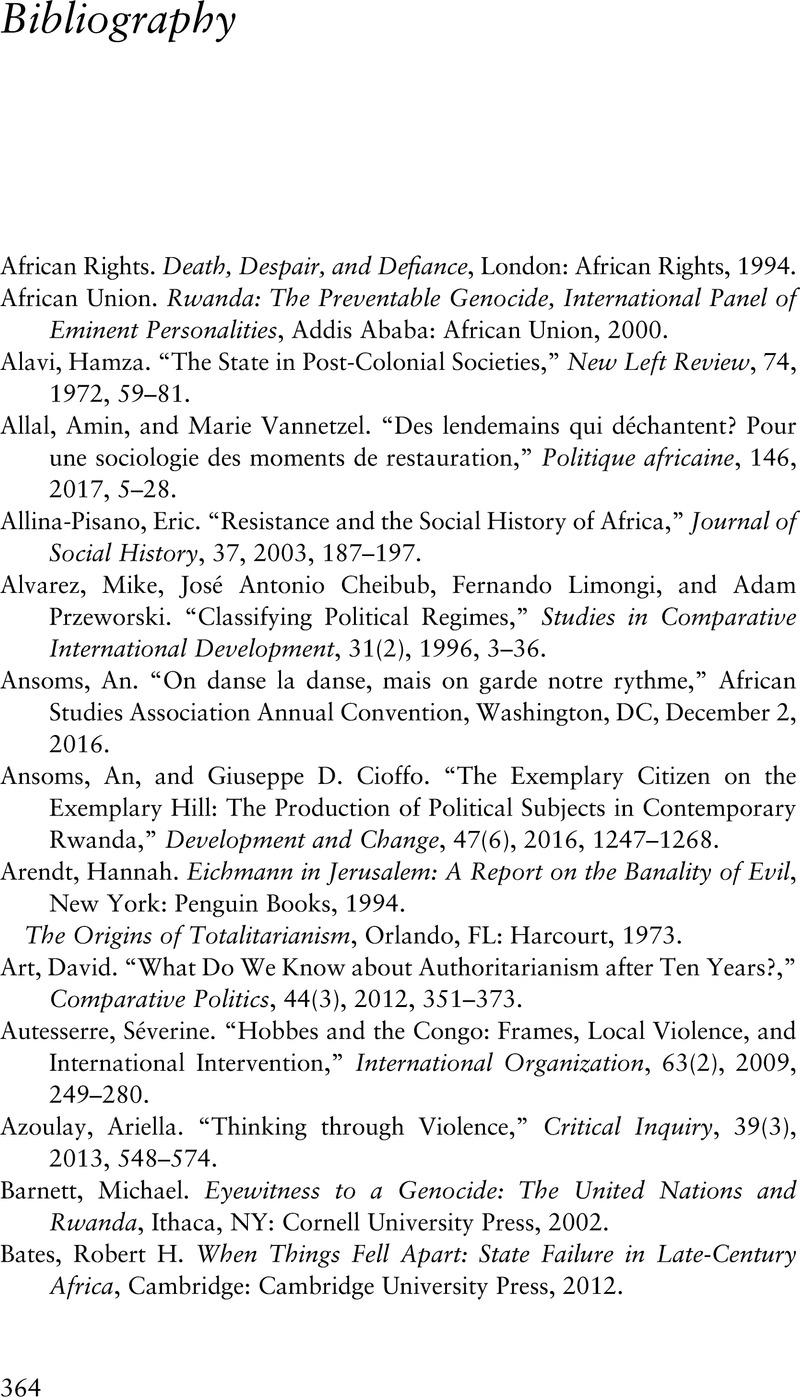Book contents
- Trajectories of Authoritarianism in Rwanda
- African Studies Series
- Trajectories of Authoritarianism in Rwanda
- Copyright page
- Dedication
- Contents
- Figure
- Tables
- Abbreviations
- Trajectories of Authoritarianism
- 1 The Study of Authoritarianism
- 2 Should Rwanda Matter to the Study of Authoritarianism?
- 3 Some Background
- 4 The Shape of Authoritarianism in Pre-genocide Rwanda
- 5 Communicating Norms for Behavior
- 6 Challenges to the Monopoly of Legitimate Violence
- 7 Competition around and within the Security Sanctum
- 8 The Political and Economic Grind
- 9 Local and Individual Trajectories
- Conclusion
- Bibliography
- Index
- African Studies Series
- References
Bibliography
Published online by Cambridge University Press: 19 January 2023
- Trajectories of Authoritarianism in Rwanda
- African Studies Series
- Trajectories of Authoritarianism in Rwanda
- Copyright page
- Dedication
- Contents
- Figure
- Tables
- Abbreviations
- Trajectories of Authoritarianism
- 1 The Study of Authoritarianism
- 2 Should Rwanda Matter to the Study of Authoritarianism?
- 3 Some Background
- 4 The Shape of Authoritarianism in Pre-genocide Rwanda
- 5 Communicating Norms for Behavior
- 6 Challenges to the Monopoly of Legitimate Violence
- 7 Competition around and within the Security Sanctum
- 8 The Political and Economic Grind
- 9 Local and Individual Trajectories
- Conclusion
- Bibliography
- Index
- African Studies Series
- References
Summary

- Type
- Chapter
- Information
- Trajectories of Authoritarianism in RwandaElusive Control before the Genocide, pp. 364 - 381Publisher: Cambridge University PressPrint publication year: 2023



